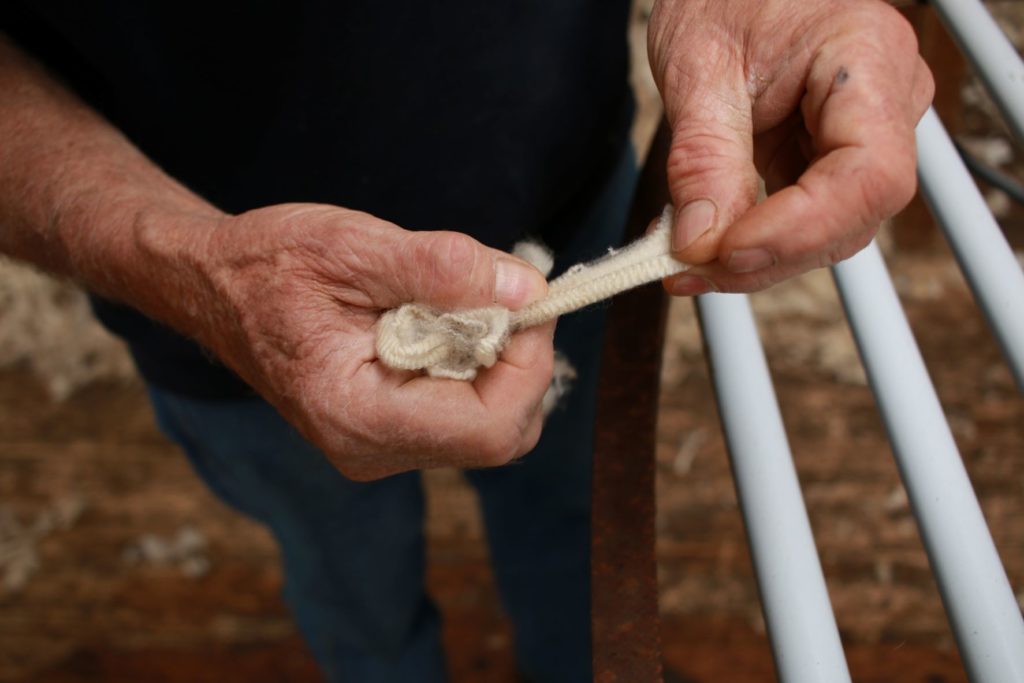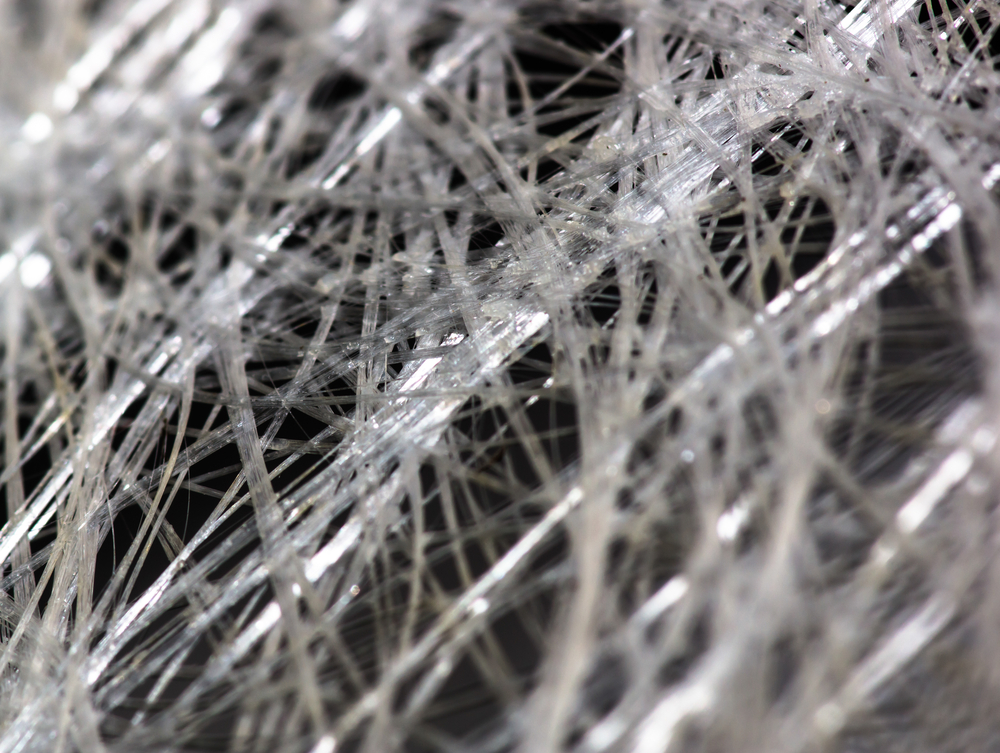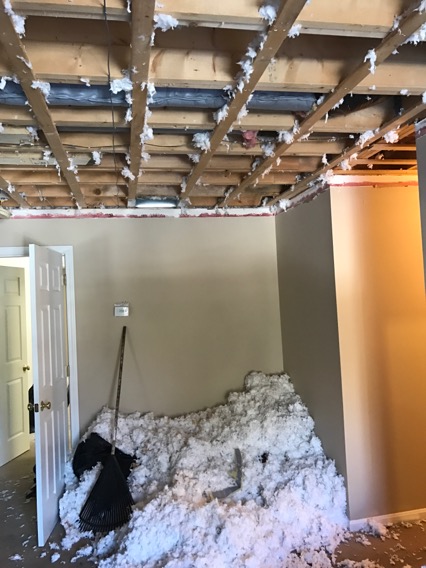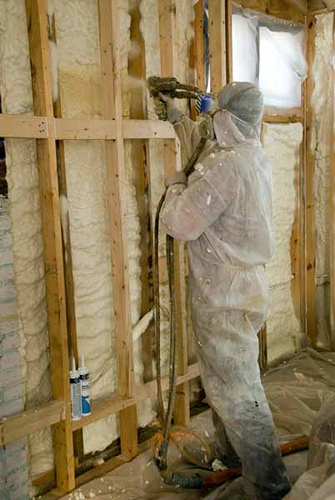Insulation is integral to ensuring that your home stays at a comfortable temperature throughout the year. But did you know that your home’s insulation could actually be negatively impacting your health and indoor air quality? Toxic spray foam insulation and fiberglass insulation can result in the release of particulate matter that is breathed in and wreaks havoc on your well- being. Recognizing the dangers of these two common forms of insulation and choosing an alternative like sheep wool can make a world of difference for you and your entire household.

Sheep Wool vs. Toxic Insulation
Spray foam and fiberglass insulation have long been the go-to materials for home builders. This is because it’s relatively cheap and highly effective at insulating the home. The problem is that working with these materials can be extremely dangerous, as can prolonged exposure to particulate matter being emitted from them. This is especially true if the materials are disturbed or begin to lose their integrity. In addition to other toxic and dangerous chemicals, older forms of these types of insulation may even contain asbestos. And while newer fiberglass insulation is approved for use in the US, it has many synthetic, hairlike fibers which easily break off and go airborne during insulation or when exposed to movement.
In an attempt to make insulation safer, a growing number of people are turning their sights to sheep wool insulation. As the name suggests, this form of insulating material grows naturally on sheep and is sheared from livestock. Typically, the materials chosen for insulation are too coarse to be used for clothing and other fabrics but are perfect for insulating the home. The end result is an efficient and effective material that is significantly lower in the presence of toxins and is safer to use in the house.
Common Problems with Spray Foam and Fiberglass
Although cheap and effective, spray foam and fiberglass insulation are dangerous for your overall health and well-being. This is true regardless of the type that is used in your home. All spray foam insulations are guilty of releasing volatile organic compounds (VOCs), and these can be absorbed into other areas of the home, including building materials and furnishings. Similarly, fiberglass is known for releasing microscopic particles into the air that can be breathed in. Both types of insulation can lead to:

- Sore throat
- Sore/itchy nose
- New or worsened asthma symptoms
- Rash
- Red or watery eyes
- Increased risk of cancer
- Chest tightness
- Wheezing
- Shortness of breath
Benefits of Sheep Wool
Whether you’re having a new home built or are planning on updating your home’s existing insulation, sheep wool is an ideal choice for safe, quality insulation. Some of the many benefits of this type of insulation include the following:
- Sustainability: First, sheep wool is an environmentally friendly and sustainable option for home insulation. In an era where everyone is looking to do their part to protect our earth’s resources, this is a perfect choice.
- Breathability: Although the idea of an airtight home perfectly sealed with spray foam insulation may seem like a good thing, it’s not. What you want is adequate insulation that will regulate in-home temperatures without completely sealing you off from the outside.
- Being airtight means that moisture gets trapped indoors and can lead to mold, mildew, and reduced air quality. Wool improves breathability and air circulation.
- All Natural: Because sheep wool insulation is produced from natural, healthy fibers, you’ll have much healthier indoor air quality.
- Durability: On top of everything else, sheep wool is exceptionally durable and will last for much longer. This translates to fewer repairs and replacements.

Detecting Health Hazards in the Home
Throughout the years, we’ve encountered many homeowners who were very confused about what was happening inside their homes. Although they were experiencing negative health symptoms, they could not pinpoint the problem. The only way to know if the air quality inside your home is being impacted by dangerous particles from spray foam or fiberglass insulation is to have the air tested. This is important for a number of reasons. First, it allows you to understand what is causing your health issues so that you can talk them over with your doctor and receive proper care. Secondly, knowing the source of the problem can allow you to call in a professional to make any necessary repairs or changes. If at all possible, talk to your professional about upgrading your home to a better, safer type of insulation like sheep wool.
Mitigating the Risk of Hazardous Insulation in Your
Home

In order to mitigate health risks to yourself and the rest of your family, we recommend the
following:
- Inspect your insulation: First, have your insulation inspected for problem areas. If you
don’t know the type of insulation your home uses, this will provide you with valuable
information. It will also let you know if there are areas where the insulation has been
disturbed and could potentially be blowing or spreading into other parts of your home,
like your HVAC system. - Test for Air Quality – Next, hire a professional to test your home’s indoor air quality.
Indoor Doctor is able to detect the presence of harmful particles and toxins in the air
from spray foam and fiberglass insulation. - Complete a Virtual Test – In the event that you are unable to have a professional visit
your home in person, the next best option is to talk to us about setting up a virtual visit.
We can mail you everything you need to test your air quality and will carefully guide you
through the process. From here, we can assess any issues and provide you with
suggestions for improving indoor air quality.
If you are unsure about of what type of insulation your home relies on or if you have concerns about health problems potentially tied to your insulation, we can help. Schedule an appointment with Indoor Doctor today.






